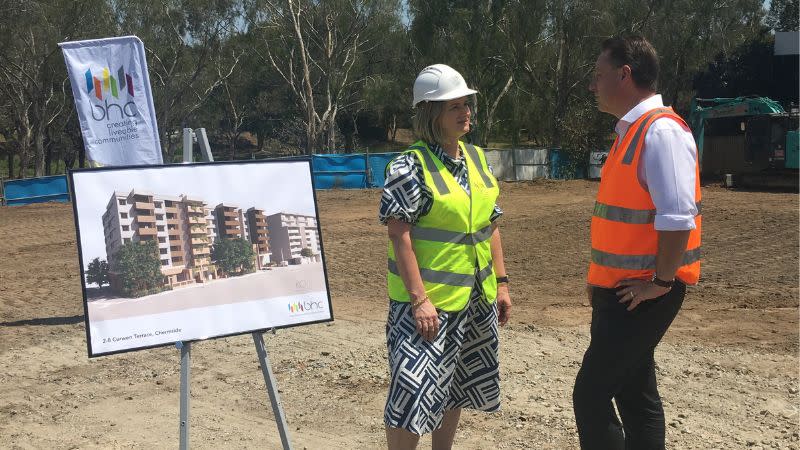Charges Slashed to Incentivise Brisbane Developers

Brisbane is cutting its infrastructure charges in hopes of boosting development of new homes in existing inner-city, high-density and principal and major centre zones.
Speaking at the site of Brisbane Housing Company’s latest Chermside development, which will deliver 92 affordable and social homes, Lord Mayor Adrian Schrinner said it was essential to incentivise rather than tax developers.
“It’s really needed given our housing crisis and housing shortage. The other good news today is that the Brisbane City Council will be supporting this project with a reduction in charges of almost $1 million,” Schrinner said.
“It is critical right now. We know there are 3000 approved DAs since January last year and many have not been able to start.
“There’s massive construction costs challenges on developments and when builders go to build new homes, they’re finding the cost of doing so much more than they anticipated, so they just aren’t going ahead.
“This is about bringing on supply sooner, bringing down the cost of housing and making sure more housing can be built at a time when it is critically needed.”
The Council had actually increased infrastructure charges in July this year, before announcing the cuts this week. But it remains to be seen whether this lever will help to balance out the construction cost increases that ratcheted up 30 per cent during the pandemic.
Brisbane Housing Company projects director Greta Egerton said it was an important piece of the puzzle when working out feasibilities.
“It’s really challenging to make our projects feasible at the moment,” Egerton said.
She told The Urban Developer that the council charge relief had helped BHC to deliver homes.
“For the three projects we’ve currently got in our pipeline we’re looking at [saving] just over $2 million.
“We’ve got a really strong pipeline of projects we’re wanting to deliver. All of the savings we’ve made through the infrastructure charge relief we will invest into affordable homes.”

Some of the practical changes that would be included following the introduction of the Brisbane Housing Supply Action Plan in August included a 75 per cent reduction for apartments up to two-bedrooms in inner-city, high-density principal and major centre areas that have been approved since January 2022, which also applies to build-to-rent projects.
Approved projects will need to be completed within four years.
There will be a 50 per cent reduction for apartments up to two beds approved from September 2023 onwards, again also including build-to-rent, and a 100 per cent permanent and ongoing reduction for registered community housing providers.
New projects will need to be approved by June 30, 2025, and completed within four years from approval to access the 50 per cent reduction.
The plan also included the relaxation of rules around carparking and building height requirements—although it is unlikely that areas outside the city centre would be allowed Kuripla-style height changes.
While these plans for height changes have yet to be finalised, Schrinner said that carparking requirements would be cut in areas with good public transport links.
“It’s something we’re looking at where there’s good access to infrastructure,” he said.
“A good example is Kurilpa, [where there are] train stations, the metro will be running through there and there’s a lot of pedestrian and cyclist opportunities, so where there’s good alternatives there’s a requirement for lower carparking, which keeps the cost of building down too.
“When we talk to people in the industry, each individual parking spot that’s built in a new development can add something like $50,000 to $100,000 on to the cost of each project. When you cut down those requirements, you’re bringing down housing prices and the cost of building and that helps bring on more supply.
“We’re only doing that in places where there’s good access to public transport, that’s not everywhere, but places like Kurilpa, and where we are at the moment in Chermside, people can get around here quite easily on public transport—they are the types of locations where we are reducing car parking requirements.”














